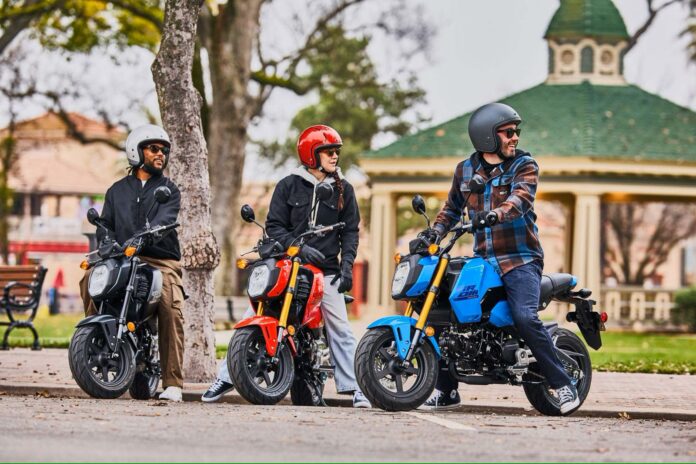Have you ever ridden a bike and thought the road just doesn’t seem like it was designed with bikes in mind? Or maybe you’ve driven a motorcycle and the drive felt more like dodging potholes than a relaxing ride? You’re not imagining any of this, it’s the reality. A lot of roads simply weren’t built for anything on two wheels, which is part of the reason for so many crashes.
Cyclists and motorcyclists don’t live in the same world as drivers. One bad intersection, a missing bike lane, or a surface that’s just a teensy bit too slick can result in a serious accident.
Unfortunately, this is anything but rare. In this article, you’ll see how good design makes a difference and why two-wheelers struggle so much on roads.
Why Two-Wheelers Struggle So Much
Cyclists and motorcyclists are completely exposed. Unlike car drivers, they don’t have steel frames, airbags, and crumple zones that protect them during a crash.
All it takes is one wrong move or one bad stretch of road and things go very wrong very fast. Visibility is another issue. Drivers often don’t see two-wheelers in their blind spots or don’t notice them when they’re turning or switching lanes.
Of course, the roads themselves don’t help in the slightest. Most of our streets are built predominantly for cars and it shows. Bike lanes (if they even exist) tend to be very narrow, poorly marked, or just disappear at busy intersections. Motorcyclists have to share lanes with vehicles many times their size on roads that aren’t always maintained with them in mind. The signs can be faded, the amount of potholes is out of this world, and intersections can be unpredictable. All of this comes down to perfect conditions for crashes.
Many of these issues are also reflected in the common causes of bicycle accidents, like sudden dooring, unsafe lane merging, and confusion at intersections. Reckless riding is a factor, sure, but the fast remains—most roads simply weren’t meant for everyone who uses them.
Road Features That Keep Riders Safe
Here are a few features that have been proven to help protect both cyclists and motorcyclists.
1. Protected Bike Lanes and Motorcycle-Friendly Shoulders
A protected bike lane is more than a painted line on the road. This is a lane that’s physically separated from car traffic, usually with curbs, posts, and sometimes even planters. This gives cyclists a space that drivers can’t just drift to. Protected bike lanes drastically reduce the risk of being hit from behind or sideswiped, especially in busy areas.
A study (published in the Journal of Transport & Health) has shown that there are fewer crashes involving cyclists in cities with more protected bike lanes.
For motorcyclists, shoulders that are wide and well-maintained do the same. They offer space to maneuver safely during heavy traffic or emergencies and help reduce the dangers of lane splitting in tightly packed areas.
2. Slower Streets Mean Safer Riders
There’s something called traffic calming and it’s exactly what it sounds like – design strategies that force drivers to slow down. These would be speed bumps, narrowed roads, curb extensions, and zig-zag layouts (called chicanes) that make it physically harder to speed through neighborhoods or busy corridors. And slower cars equal less deadly collisions.
When cars go slower, drivers have more time to see cyclists and motorcyclists, and the crashes that do happen tend to be less severe. Data from several European cities (including Oslo and Paris) show that implementing traffic calming measures results in a noticeable drop in injury rates for those on two-wheelers. The idea is simple – if it’s harder to speed, it’s easier for everyone to stay safe.
3. Fixing Intersections
For anyone on two wheels, intersections are some of the most dangerous places to be. That’s because they create multiple “conflict points” where vehicles cross paths, sometimes at odd angles or without a clear right-of-way. Traditional intersections depend on visibility and driver awareness, which is far from ideal.
Roundabouts and redesigned intersections are a much better approach. Roundabouts lower speeds and eliminate head-on or T-bone collisions, so they reduce severe crashes.
For cyclists and motorcyclists, protected intersections (with dedicated waiting areas, bike signals, and better sightlines) give riders more time and space to react. Some even have advanced stop boxes so cyclists can position themselves ahead of traffic at red lights.
These are seemingly small tweaks, but they do so much to help prevent risky situations.
Conclusion
So, to answer the original question – can better road design prevent two-wheeler crashes? Absolutely. But that can only happen if cities actually put some thought (and budget, of course) into it. Nobody should feel like they’re playing a nonstop game of “dodge the hazard” on the road, which is exactly what motorcyclists and cyclists deal with every day. They should feel like they belong there because they do.
And if you think about it, is there anyone that doesn’t benefit from smoother traffic, with less crashes and nobody ending up in the ER?


















